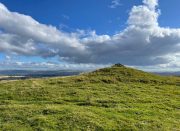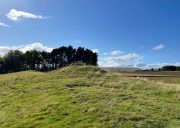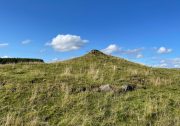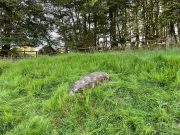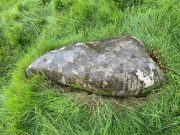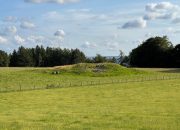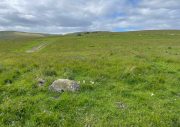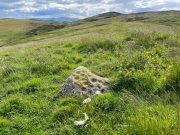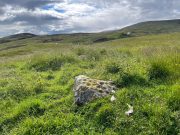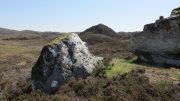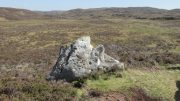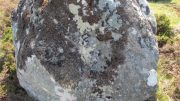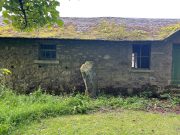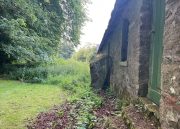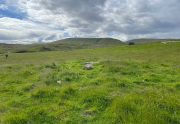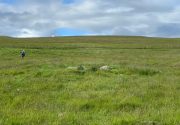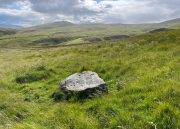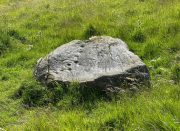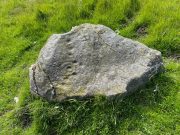Cup-and-Ring Stone (lost): OS Grid Reference – NT 482 214
Also Known as:
- Blackcastle Hill
Getting Here
Archaeology & History
Despite there being a number of references to this carving, it would seem to have been lost. First described by James Elliot (1967) in the Discovery & Excavation journal , albeit briefly, he told that,
“A cup-marked stone which was found on this farm several years ago, has been recently identified as a “cup within a cup” type. (It was) retained by finder.”
But there was some initial confusion about its general whereabouts when Ron Morris (1967) gave a brief note of what seemed to be an additional carving in the same edition of the 1967 journal, telling us that at nearly Blackcastle Hill there existed the following:
“Small gritstone boulder, truncated-cone-shaped, having on its top surface a “cup-and-ring”, composed of a “saucer” 4½in diameter, within its centre a much deeper and clearly defined “cup”, 2in diameter. Depth 1¼in. Now removed for safety by J. W. Elliot to Whinfield Sawmill yard, Whinfield Road, Selkirk.”
As it turned out, both Elliot and Morris’s separate entries were talking about the same stone. Morris subsequently clarified this when he came to describe the petroglyph in his survey of Southern Scotland. (1981) He reported then that the carving was “beside the house’s porch in the sawmill’s yard” — but it hasn’t been seen since. Does anyone know what’s become of it, or where it might be? If you happen to find it, see if you can get a good photo or two and let us know on our Facebook group.
References:
- Elliot, James W., “Synton-Mossend, near Ashkirk: Cup-Marked Stone,” in Discovery & Excavation, Scotland, 1967.
- Morris, Ronald W.B., “Blackcastle Hill: Cup Marks,” in Discovery & Excavation, Scotland, 1967.
- Morris, Ronald W.B., “The Cup-and-Ring Marks and Similar Sculptures of Scotland: A Survey of the Southern Counties – part 2,” in Proceedings of the Society of Antiquaries, Scotland, volume 100, 1968.
- Morris, Ronald W.B., “The Cup-and-Ring and Similar Early Sculptures of Scotland; Part 2 – The Rest of Scotland except Kintyre,” in Transactions of the Ancient Monuments Society, volume 16, 1969.
- Morris, Ronald W.B., The Prehistoric Rock Art of Southern Scotland, BAR: Oxford 1981.
© Paul Bennett, The Northern Antiquarian
The map could not be loaded. Please contact the site owner.
